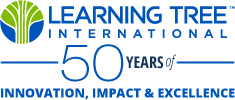- 3-day instructor-led training course
- Learning Tree end-of-course exam included
After-course instructor coaching benefit
After-course computing sandbox included
Get the Advantage $3,895
- Take this course and gain unlimited access to more than 300 virtual instructor-led courses
- Future-proof your career with more than 100 sought-after certifications in the market
- Build real skills through hands-on learning in more than 180 virtual labs
- Grow your skills and capabilities with more than one course at a time and save
Thank you for choosing subscriptions!
-
Nov 25 - 27 9:00 AM - 4:30 PM ESTNew York or Virtual
-
Jan 8 - 10 9:00 AM - 4:30 PM ESTOttawa or Virtual
-
Jan 22 - 24 9:00 AM - 4:30 PM ESTWashington, DC or Virtual
-
Mar 26 - 28 9:00 AM - 4:30 PM EDTHerndon, VA or Virtual
-
Apr 23 - 25 9:00 AM - 4:30 PM EDTNew York or Virtual
-
May 21 - 23 9:00 AM - 4:30 PM EDTOttawa or Virtual
-
Jun 11 - 13 9:00 AM - 4:30 PM EDTWashington, DC or Virtual
-
Aug 13 - 15 9:00 AM - 4:30 PM EDTHerndon, VA or Virtual
-
Sep 10 - 12 9:00 AM - 4:30 PM EDTNew York or Virtual
Scroll to view additional course dates




